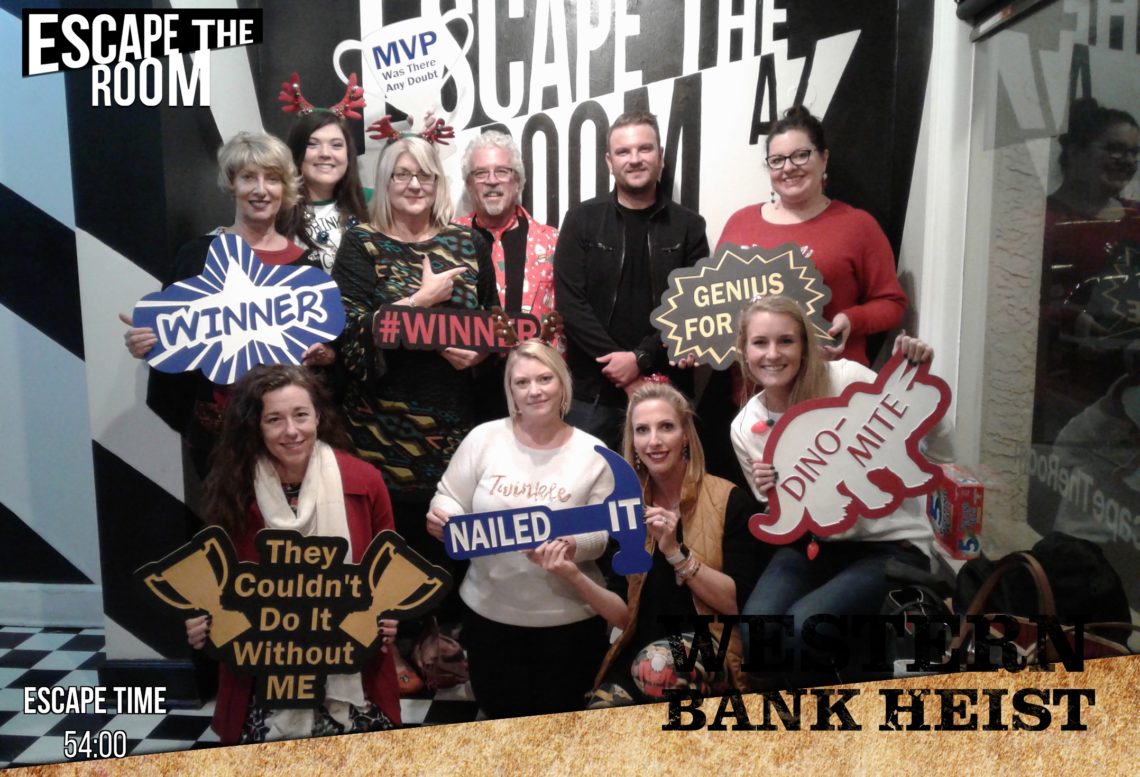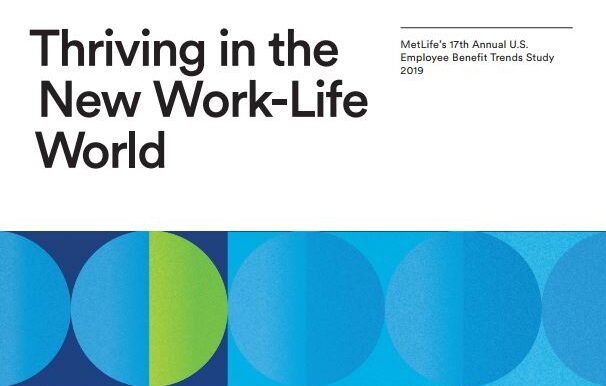Arizona’s Economy: 2-Year Prediction of Recovery
Arizona Requirements for Businesses: COVID-19
Navigating Our New Normal – HR Insights Magazine (Volume IX)
Scottsdale Economy Report – April 2020
FFCRA Employee Rights Notice
Skilled Worker Shortage = Decline in Revenue
2020 Resolutions for Employers
Not Keeping Employment Records Can Place Arizona Employers at Risk
Tis the Season of Work Holiday Parties!
The State of the Gender Pay Gap 2019
MetLife’s U.S. Employee Benefit Trends Study 2019
Mobile Recruiting Insights
Employers Decide Between Performance Reviews and Check-Ins
Recruiting Tips in the Age of Google
Employers are Getting Ghosted
6 Strategies to Attract, Motivate and Retain Knowledge Workers
Narrow Your Candidate Pool and Make the Right Hire
The Benefits of Telecommuting for Employers and Employees
AI Software is Changing the Workforce
Changing Generations in the Workforce
How to Interview for Critical Thinking Skills
6 Ways to Get Your Resume Noticed
Current Unemployment Rate Favors Job Seekers
6 Tips to Boost Your Strategic Hiring Process
What’s Killing Your Candidate Pool?
Arizona Growth Expected in 2018
7 Tips to Cultivating A Diverse Workplace
5 Leading Interview Tools
5 Uses of AI in the Hiring Process
Build Transparency in Your Hiring Process In Three Easy Steps
Remote CMO Jobs Heat Up in 2018
Flexible Work Fills the Gaps
What to Expect in 2018 for Business Travel
5 Human Resources Trends
2018 Recruiting Trends
5 Things to Know About Working Remotely
Top Workplace Issues for 2018
Top Hiring Challenges and How to Overcome Them
3 Tactics to Help You Hire a Diverse Team
Attract Top Talent with These 4 Wellness Benefits
8 Creative Employee Benefits to Drive Your Recruiting Efforts
The Benefits of Trading in Business Suits
Low Unemployment Means Employers Can’t Fill Positions
The U.S. unemployment rate is at the lowest level since 2001. Rumor has it the U.S. could be inching toward “full employment,” a time in which employers can’t find any more available, qualified workers to fill open positions. Despite the low unemployment level, a new study from CareerBuilder found that 76% of full-time, employed workers are either actively looking for a job or are open to new opportunities.
As employers grow increasingly competitive for labor, job seekers may have an edge in the low unemployment market. It’s important for employers to remember that the candidate experience starts from the very first click and can impact how effectively a company is able to recruit quality candidates.
Both candidates and employers alike should understand how best to adapt to the ever changing job market. Here are some facts to be aware of.
3 facts every employer should know about the candidate job search experience:
1. Candidates are quicker to drop off if the application seems too cumbersome or the process is poor.
2. Candidates move on quickly if the hiring process is slow-moving. According to CareerBuilder, 66% percent of job seekers said they will wait less than two weeks to hear back from the employer before moving on to the next opportunity.
3. You may not know how good or bad your process is so consider putting on your job seeker hat and go through the hiring process. Experience your jobs, career site, and company interactions through the eyes of the job seeker so you can make improvements where needed.
3 facts every job seeker should know about job hunting:
1. Finding a job may take longer than you think. The average time it takes to find a job is typically at least two months.
2. Your resume is not enough, employers want to see a cover letter, recommendations and links to social media profiles to get the information they need in order to assess whether someone is a good fit for the job.
3. The competition may be putting in more hours than you. On average, job seekers spend 11 hours a week searching for jobs.
If you’re interested in a job in the Phoenix area, check out our job listings.
Team Focus: 4 Tips to Effectively Restructure a Team for Efficiency
Traditionally, companies tend to focus on work-life balance, employee engagement, and diversity to create culture. However, in recent years, there has been a shift to reorganize companies to improve speed, time to market, and efficiency. There is a team focus.
According to Forbes, 92% of global organizations see organizational restructure as a critical priority. Nearly half of companies are either in the middle of a restructure or planning one. However, only 14% of executives believe their company is ready to redesign their organization and build cross-functional teams. Team focus is imparitive.
Here are 4 tips for companies to effectively restructure their teams:
1. Break down silos
When an organization operates in silos, innovation suffers. Companies have shifted focus to bring departments together and encourage communication. Many companies have started investing in operation infrastructures. This helps to break down communication discord between departments and allows teams to quickly identify connections between activities and desired outcomes.
It’s also key to move employees around. When people find themselves in a new position they bring valuable expertise and knowledge with them.
2. Focus on Mission and Culture
Companies should look to organize teams around mission, product, market, or an integrated customer need rather than business functions. This will empower teams to make decisions that are consistent with goals and overall mission.
3. Move away from top-down management
Today, the most productive people will create the most value by both generating and executing their ideas. This type of employee demands a different approach to management to drive competitiveness and company success. Many companies are adopting flatter, more autonomous structures that operate under empowerment and alignment with greater agility and velocity.
4. Foster a culture of sharing and feedback
Reorganizing a company creates many transitional phases, if you want your organization to succeed, it’s important to establish a culture of sharing. Top companies are top companies because they consistently search for new ways to make their best even better. Consider creating specific roles to help facilitate cross-team communication and problem-solving.
Restructuring an organization is a major task. To succeed, focus on connecting people, communicating the mission, and encouraging people to share. A team focus builds on internal success.
For more information, visit our website
Recruiting with Virtual Reality
Manufacturers Appeal to Millennials into the Workplace with Virtual Reality
Manufacturers across the U.S. are working to rebrand manufacturing as a high-tech industry full of opportunity. A labor shortage looms ahead for manufacture as more and more of the senior workforce retires, and the need for millennials to step into manufacturing roles increases. Manufacturers are rethinking traditional recruiting methods to attract younger people to their companies. The rebrand efforts will aim to fill two million manufacturing jobs by 2025.
This has proven to be a difficult task for the manufacturing sector thus far. Studies show millennials find big technology firms such as Google, Facebook, and Apple to be appealing. This is mostly due to the idea that these companies offer a more enticing work environment. Millennials are unaware of the benefits to working in modern manufacturing.
The millennial generation use smartphones to access the internet and watch videos on a greater scale than previous generations. Recruiting millennials, is different and manufacturers are trying to meet them where they are. Turning to mobile devices and video to introduce their companies.
Manufactures are also using a cutting-edge tool, virtual reality, to attract young talent and dispel the perception that manufacturing is outdated. Recruiters are using virtual reality at career fairs to screen candidates and allow millennials to experience the manufacturers technology in a way that would otherwise be inaccessible. Manufacturing is full of cutting-edge technology and the industry highlights this to peak millennials’ interests.
By leveraging new innovations like virtual reality, manufacturers are showing the most tech focused generation opportunities they may not have been aware of. Manufacturers are hopeful the rebrand efforts will be effective meeting their needs for labor.
The Annual Review Has Been Replaced
Top employers have started abandoning the annual review process in favor of continuous or real-time reviews to provide employees with an assessment of their performance. As businesses focus on teams and become less hierarchical, many are streamlining annual reviews and using software to encourage constant feedback and coaching. According to a recent LinkedIn article, the move away from annual reviews to continuous performance cycles is one of the biggest non-digital HR trends for 2017. The annual review process is falling from favor and viewed as cumbersome and expensive. Traditional performance reviews have not been found to improve the overall performance of an individual employee or an organization.
For many employees, this has to be good news. The annual review was a source of anxiety and dread for many. However, the experience of having regular ongoing conversations about performance and career goals can also be a challenge.
Here are some best practices to keep in mind when participating in a conversation about performance:
1. Ask questions. Be prepared to ask leading questions to get direct and constructive feedback. Look back at your major accomplishments since the last performance meeting and ask specifically what worked and what didn’t.
2. Be willing to adapt. Show your manager that you have a willingness to change. If you are frustrated about a less-than-satisfactory outcome from a project or task, ask for feedback and then make a commitment to changing the way you do the job.
3. Seek feedback. Even if you have regularly scheduled conversations about performance, it doesn’t mean that you can’t seek out real-time feedback on a current task or project. Informal check-ins can be a very constructive way of making small corrections in performance.
4. Be open to advice. A performance review – whether it is a once-a-year experience or something you do several times a year – involves critical discussion and requires the individual to prepare mentally and emotionally to engage in a discussion about areas of improvement
Millennials in the Workplace: Meet Gen Z.
The next generation to join Millennials in the workplace has been coined “Generation Z” or “Gen Z.” Gen Z refers to the group of people born after the Millennial generation. Generation Z represents the 23 million Americans born between 1994 and 2010, ages 7 to 23 years old. This year, the first group of Gen Z-ers graduated from college and joined Millennials in the workplace.
Gen Z is the most diverse and multicultural of any generation in the U.S. to date. They are also the most digitally connected generation thus far, having never known a world without the Internet, mobile phones or iTunes.
This young generation also has their own set of values, abilities, and preferences. They are open minded, adaptable, ready to problem-solve at any moment, and confident to serve as our future business leaders.
It might be easy to group Millennials and Gen Z together. Similarly to Millennials in the workplace, Gen Z differs from other generations when it comes to corporate ideals, and how they are changing the workplace dynamic. However, as more information emerges about Gen Z, it’s also clear they vary from Millennials in the workplace when it comes to their expectations about the companies they work for.
If companies want to remain competitive in today’s business landscape they simply cannot ignore these facts:
- Gen Z is made up of entrepreneurial and independent individuals who expect to create and run their own start-up companies someday.
- Those who decide to work for companies prefer a corporate office, thrive on opportunity and want to succeed quickly. They expect companies to show them how to attain a high-level position in a short amount of time.
- Gen Z is used to having everything immediately because of technology. They expect their employers to embrace new technologies and incorporate technology into the workplace.
- Because they have always been connected to the world through social media, Gen Z consider themselves global citizens and are well equipped for the global business environment.
- Gen Z professionals require more rewards and recognition than any other generation. They are used to receiving trophies and accolades for even the smallest accomplishments.
- This generation expects mentoring and coaching. To them the most important employee benefit they expect from their employer is training and development.
- Gen Z-ers also believe “communicative” is the most important quality of a leader.
- Gen Z wants to change the world, feels its’work is of value to society, and embrace the idea of volunteer work.
Be ready to meet Generation Z. This highly educated, technologically savvy and extremely innovative generation feels that it can achieve anything and is ready to compete with Millennials in the workplace.
Human Resources: Improve Your Employment Brand and the Candidate Experience – For Better Hires
Three Easy Ways Human Resources can Help the Candidate Experience
I remember a client of mine commenting once, she hoped she never had to look for a job for herself because she had turned so many people down for employment, they would surely return the favor. She was joking, and she wasn’t joking.
In truth, I had long observed that her company, had a punishing application and interview process that candidates resented. Often the best candidates for the job abandoned the application and interview process early on. Candidates need for information was shrugged off as of secondary importance while they were subjected to lengthy abstract questioning in preliminary interviews. Recruiting partners were scripted to obtain information but didn’t enroll the candidates in the process.Time and again they lost excellent people.
Candidates require key information to engage in a recruitment and screening process. To get the best ones keep in mind that recruitment is a two-way street. Your company has an employment brand built with every interaction and communication. Your job applicant makes a choice to buy it – to continue at every stage of assessment and selection. Offer information about your company, its culture, its values, and its commitment to customers. And take time early in your interaction to allow the applicant to ask their questions about the position and your company.
Candidates have free will and choice about where they spend their time in their job searches. Help them identify your company as one they want to learn about.
A recent study found that 60% of job seekers have had a poor experience while they were a candidate for employment. A poor candidate experience can lead to a decreased applicant pool and an increase in negative employer reviews on sites such as Glassdoor.com or in social media. As a result, it is essential that companies take a proactive approach to ensure that applicants enjoy a quality experience regardless of the end result.
According to FORBES, many human resource executives will be looking to improve the candidate experience at all stages of the recruiting process this year. There are three ways that human resources can improve their candidate experience and in return receive higher quality and more engaged applicants.
1. Redesign your online Application forms
Oftentimes a candidate’s experience becomes negative as soon as they enter the job application form. Deterred by requirements for details they may not have at hand. Although it’s important for employers to get the information they need to make an informed decision, an initial application form should be designed with a focus on its usability for the applicant. This can be achieved by shortening the application, making it mobile friendly and regarding it as an initial tool for high level intake. Greater detail can be garnered at a later stage. Companies who do these few things will obtain a larger pool of quality candidates at the top of the funnel.
2. Human Resources can set the candidate’s expectations for your recruitment process – it is part of your employment brand
Setting clear expectations for candidates and delineating each step of the hiring process is beneficial for both the applicant and employer. Candidate intake, interviews, site visits, and introduction to team members are all part of your company culture. The more equipped a candidate is, the more they can focus on their fit with the role and the appeal your company brand holds for them. Consider offering an accessible asset and content on your company website that details the history, culture and hiring process. If you engage in multiple meetings ahead of a hiring decision, explain that as a benefit in making a career choice. This equips candidates with company knowledge and a clear hiring path to follow throughout the process.
3. Improve Communication
Many companies are falling short in one key area of the hiring process; communication with applicants. Applicants who are left in the dark are unlikely to apply for another position in the future. ’Forgotten’ candidates tell their friends, family, and professional network about their dissatisfaction with their experience. In a business world that is built on networks of professional contacts, this can be harmful to a business employment brand. Consider implementing technology during the hiring process that automates email follow-up messages to those that are not qualified. At a minimum, thank candidates for their time and leave the door open for future opportunities.
Human Resources can facilitate these three steps and move in the right direction in terms of candidate experience.
If you’re looking to fill a job or find a job in the Phoenix, AZ area, Renaissance Personnel Group has been placing the right people in the right jobs for over 30 years.
Exit Interviews – Last Words Spoken
Exit interviews are a valuable tool for organizational improvement, usually involving a meeting between management or a human resources representative and the individual leaving the organization. They are also valuable to the exiting employee and offer a platform to articulate insights and feedback. It is important to be just as professional, well-mannered and well-spoken in your exit interview as you would be in a pre-If you’re still looking!. Take time to prepare yourself and your choice of words and topics.
Exit interviews are often very helpful in informing companies about what the employee experience is like and what opportunities for improvement exist. For you, as the soon to be ex-employee, conducting your exit interview in a professional and constructive manner ensures you don’t burn any bridges.
A strong exit interview means telling the truth, but maybe not the additional resources. It might be tempting to share all of your frustrations, but you shouldn’t. Share facts and remember this is not the place to become emotional.
Prepare for your exit with your head held high. What will you be asked?
The Human Resource department wants to ask the right questions to help decrease employee turnover and prevent wrongful termination lawsuits. You can expect a series of open-ended questions with the purpose of learning more about your employment experience. You will have an opportunity to share the reasons you resigned. The three most common reasons employees seek out new work situations are greater earnings opportunity, increased or different work responsibility or promotion and loss of respect or rapport with a supervisor or co-worker. If you fall into one or more of these categories, don’t be afraid to speak up. It’s likely that HR is already familiar with these situations.
Sharing negative information: Don’t do it.
Speak only constructively when offering feedback. If possible, balance negative remarks with something positive.
A place you can stand. Remember that old adage: don’t say anything about someone that you wouldn’t say to them personally. As a best practice, assume that what you say may be shared with others in management. Be professional and be measured in your content, word choices and tone.
Envision your feedback as if it were a written document, publicly available to the entire company. Ask yourself if it reflects how you want to be remembered and how you want to contribute to the company you have been part of. Don’t let your last hour destroy your legacy and your brand and all that you worked to build professionally over months or years as a positive and contributing team member.









































